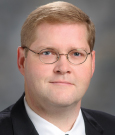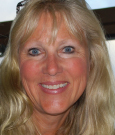The number of nurse practitioners (NPs) and physician assistants (PAs) in community cancer practices is growing, according to ASCO’s annual census of oncology practice, published in March 2014.1
As though to illustrate that finding, a new professional society—the Advanced Practitioner Society for Hematology and Oncology (APSHO)—was launched earlier this year at JADPRO Live. That meeting is sponsored by the Journal of the Advanced Practitioner in Oncology (JADPRO), itself only 4 years old. And these are just the most recent developments in a field experiencing rapid growth and change.
“It’s a really different culture,” said Maura Polansky, MS, MHPE, PA-C, who directs PA education at The University of Texas MD Anderson Cancer Center, Houston, and has been in the field more than 19 years. She was speaking of one issue in particular—physician acceptance—but that observation could well apply to other areas of change, according to interviews with PAs and NPs in a variety of practice settings.
Growing Numbers
To begin with, there are the growing numbers of PAs and NPs overall. According to the federal Bureau of Labor Statistics, their numbers will grow by more than 30% between 2012 and 2022, much faster than the average 11% growth rate forecast for all professions.2
ASCO’s annual census suggests that the numbers of oncology PAs and NPs in medium and large community practices grew from 2012 to 2013 and are likely to continue to do so. For instance, 35% of practices responding to the survey, including both community and academic practices, said they planned to hire nurse practitioners in the next 12 months, and 21% planned to hire physician assistants. Each percentage was an increase compared to the 2012 census.
Steven H. Wei, MPH, PA-C, a physician assistant in MD Anderson’s Department of Surgery, is witnessing the growth firsthand. “The recruitment of PAs and NPs into surgical oncology is growing exponentially,” he said. Up to 10 new PAs and NPs have been hired annually at MD Anderson for the past few years. At the same time, their roles are expanding. PAs and NPs not only assist in the operating room, he said, but now have major responsibility in areas such as pre- and postoperative care and survivorship clinics.
Expanding Roles
Other oncology NPs and PAs interviewed by The ASCO Post agreed. In both academic and community cancer centers, they said, their roles and responsibilities have expanded dramatically.
When Susan S. VanBeuge, DNP, APRN, FNP-BC, CNE, FAANP, received her nurse practitioner degree 11 years ago, she was the first advanced practice nurse at University Medical Center in Las Vegas to work in the operating room as a first assistant in oncologic surgery. As she learned the role, the partnership between NP and physician also evolved. “We had to teach ourselves about our roles,” she said. “Now, many of the schools for surgical first assistant have specific tracks for nurse practitioners that were not in place 11 years ago.”
State laws also help determine what advanced practitioners can do. Steven L. Black, MBA, an oncology practice consultant and Vice President of The Oncology Group in Austin, Texas, who spoke at the annual meeting of the Association for Community Cancer Centers in March, said that some states allow full, independent practice (mostly western and rural states). Others allow “reduced” practice, requiring collaboration with a physician, or “restricted” practice, requiring supervision by a physician.
Nevada’s law was amended last year to allow full practice authority, and since then, applications for advanced practice licenses in the state have risen by approximately 19%, said Dr. VanBeuge, who actively advocated for the new law.
Another reason for expanding roles in academic centers is the cap now placed on the number of hours medical residents can work and the number of patients they can manage at one time. “That caused tremendous growth in the roles of NPs in inpatient settings,” said Richard D. Brown, MSN, CRNP, JD, FAANP,
who coordinates the pediatric bone marrow transplant program at the Children’s Hospital of Alabama in Birmingham. Advanced practitioners now manage entire panels of patients in the hospital, make referrals for home health care, conduct patient education at discharge, and write chemotherapy orders, he said.
They also can be closely involved with coordination of care, said Todd Pickard, MMSc, PA-C, who manages the PA program at MD Anderson. PAs and NPs there take part in multidisciplinary case review meetings, where the entire team discusses each case.
One reason for expanding collaboration, many said, is that PAs, NPs, and physicians now train side by side in both courses and clinical rotations. As a result, “most modern-day physicians are used to thinking of themselves as part of a multidisciplinary team, starting in medical school,” said Mr. Brown.
“Every physician at MD Anderson now expects to have a PA or NP on his or her team,” commented Mr. Pickard. “One reason is just that there are more patients and more demand for care than any single person can provide for.”
Continuing Education
As roles expand and cancer care becomes more complex, the need for continuing education—and new avenues to provide it—is also growing. The purpose of the newly launched Advanced Practitioner Society for Hematology and Oncology is education and support, said the group’s founding Chair, Pamela Hallquist Viale, RN, MS, CNS, ANP, an oncology nurse practitioner and Editor-in-Chief of JADPRO.
“We saw the need for more live education—meetings and symposia—geared specifically to advanced practitioners as a group,” she said. The new society is the first to include a range of advanced practitioners in oncology, including clinical nurse specialists, advanced degree nurses, and pharmacists, as well as NPs and PAs.
The Association of Physician Assistants in Oncology and the Oncology Nursing Society also offer continuing education at their annual meetings. And ASCO has special sessions at its annual meeting for advanced practitioners as well as online courses (see university.asco.org/acapppage).
PAs and NPs get most of their formal training through masters programs, where the emphasis is generally on primary care. In a recent survey of PA programs,3 Ms. Polansky and colleagues found that cancer prevention and initial diagnosis were the primary areas of oncology taught. Programs reported a small percentage of students who participated in a clinical elective rotation in oncology. The authors concluded that “novel means of enhancing cancer education during PA school and continuing medical education following primary PA education will be essential to expand PAs’ competencies in cancer care.”
“We don’t expect PA schools will devote more time to oncology,” Ms. Polansky said in an interview. And although she heads MD Anderson’s postgraduate program for PAs specializing in oncology—the only one in the country—she doesn’t think that more such programs are the answer.
The generalist model is “very effective—it is not broken,” she said. Instead, the MD Anderson group is trying to sort out what opportunities can be developed for more learning. One current project is development of an online continuing education program with lectures, interactive case studies, discussion forums, and assignments, including modules for major cancers and major complications.
In general, she thinks that continuing education is needed in more
accessible forms, especially for those in community practice, including
mentorships and other learning opportunities.
“The big question is how to deliver those,” she said. “New models are needed.” ■
Disclosure: Ms. Polansky, Mr. Wei, Ms. VanBeuge, Mr. Pickard, and Ms. Viale, reported no potential conflicts of interest.
References
1. Hanley A, Hagerty K, Towle EL, et al: Results of the 2013 American Society of Clinical Oncology National Oncology Census. J Oncol Pract 10:143-114, 2014.
2. Bureau of Labor Statistics: Occupational Outlook Handbook, 2014-15 Edition. Washington, DC; U.S. Department of Labor, 2014.
3. Polansky M, Ross AC, Coniglio D, et al: Cancer education in physician assistant programs. J Physician Assist Educ 25:4-11, 2014.



